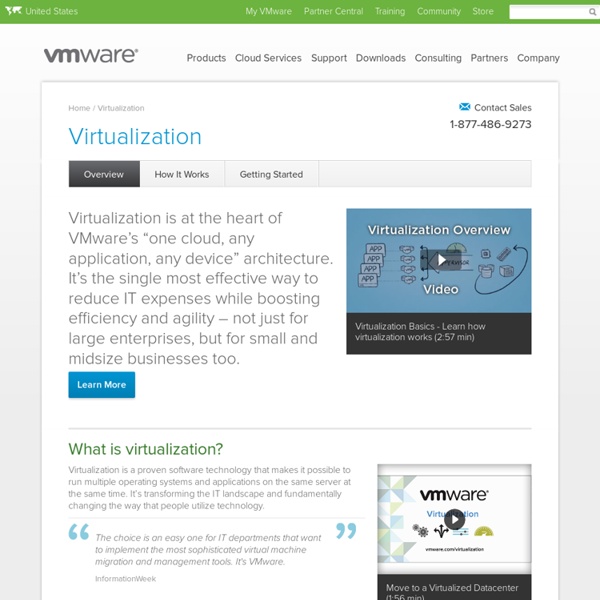



VMware VMware, Inc. is a US software company that provides cloud and virtualization software and services,[2][3][4] and claims to be the first to commercially successfully virtualize the x86 architecture.[5] Founded in 1998, VMware is based in Palo Alto, California. In 2004 it was acquired by and became a subsidiary of EMC Corporation, then on August 14, 2007, EMC sold 15% of the company in a New York Stock Exchange IPO. The company trades under the symbol VMW.[6] History[edit] In 1998, VMware was founded by Diane Greene, Mendel Rosenblum, Scott Devine, Edward Wang and Edouard Bugnion. In 2003, VMware launched VMware Virtual Center, the VMotion, and Virtual SMP technology. 64-bit support appeared in 2004. In August 2007, EMC released 15% of the company's shares in VMware in an initial public offering on the New York Stock Exchange. On September 16, 2008, VMware announced its collaboration with Cisco to provide joint data center solutions. Acquisitions[edit] Litigation[edit] Products[edit]
What is VMWare? What is a Virtual Appliance? Using Virtual Appliances with Parallels? Windows on Mac Q&A - Revised March 22, 2010 To be notified of new Q&As, sign up by e-mail as well as use Twitter and Google+. If you find this page useful, please Bookmark & Share it. Thank you. What is VMWare? From the "About Us" page of the VMWare company website: VMware was founded in 1998 to bring virtual machine technology to industry-standard computers. More than 4 million users and over 20,000 corporate customers of all types and sizes use VMware software, including 99 of the Fortune 100 companies. VMWare is widely regarded to be the leader in the virtualization marketplace, and many corporate users are no doubt excited to have the company developing a virtualization solution for MacOS X. What is a "Virtual Appliance"? In the Virtual Appliance Marketplace, VMWare states that: A virtual appliance is a pre-built, pre-configured and ready-to-run software application packaged with the operating system inside a virtual machine.
Install Windows 7 in VMware Virtual Machine Important Information The Elder Geek sites contain many articles and suggestions for modifying the Windows operating system. I've tried these tweaks and tips on many systems. Copyright © 2002/2003/2004/2005/2006/2007/2008/2009/2010/2011/2012/2013, Jim Foley/The Elder Geek, All Rights Reserved Worldwide Reproduction, in any form, of information on this site is prohibited without express written permission. How to Install VMware Workstation and Create a Virtual Machine on Your PC Edit Article Two Parts:Install VMware WorkstationAdd Virtual MachinesCommunity Q&A VMware Workstation is a computer emulator. It allows you to create virtual machines in which you can install operating systems as if they were physical machines. You might want to emulate an operating system because you want to run a program that isn't compatible with the host operating system (the operating system that you are installing VMware Workstation on), or because you want to test malware without putting an actual computer at risk. This article shows you how to install VMware Workstation 11 and create or open a virtual machine. Steps Part 1 Install VMware Workstation Download the Setup File <img alt="Image titled Download 10.png" src=" width="728" height="312" class="whcdn">3Download VMware Workstation. Set Up a Typical VMware Workstation Installation Set Up a Custom VMware Workstation Installation (advanced) Part 2 Tips